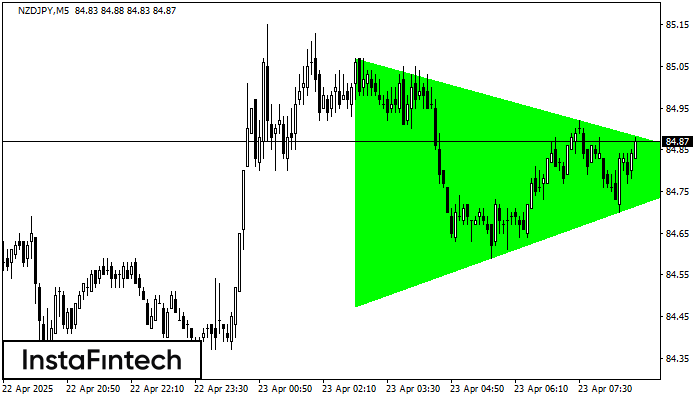Bullish Symmetrical Triangle
was formed on 23.04 at 07:41:10 (UTC+0)
signal strength 1 of 5

According to the chart of M5, NZDJPY formed the Bullish Symmetrical Triangle pattern, which signals the trend will continue. Description. The upper border of the pattern touches the coordinates 85.07/84.81 whereas the lower border goes across 84.47/84.81. The pattern width is measured on the chart at 60 pips. If the Bullish Symmetrical Triangle pattern is in progress during the upward trend, this indicates the current trend will go on. In case 84.81 is broken, the price could continue its move toward 84.96.
The M5 and M15 time frames may have more false entry points.
Figure
Instrument
Timeframe
Trend
Signal Strength







